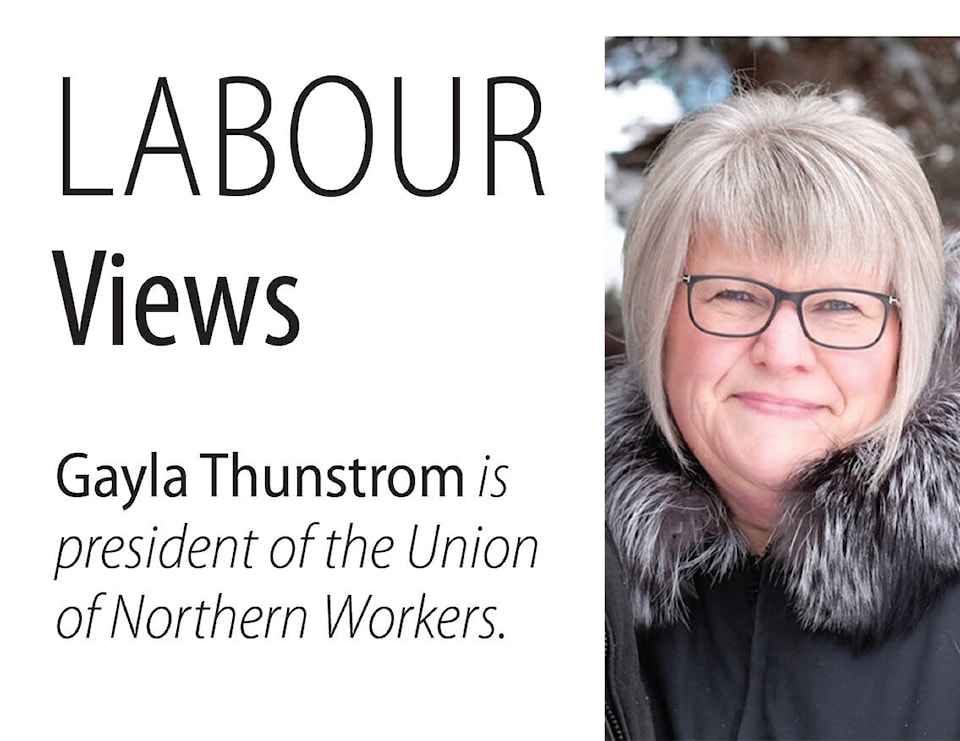Summer is in full swing, and while many Northerners are enjoying the warm weather and hopefully some vacation time, the Union of Northern Workers is hard at work and as busy as ever.
Many of our locals are currently engaged in some stage of collective bargaining. As there are 33 bargaining units in the UNW, collective bargaining is pretty much always going on.
A bargaining unit is a group of employees who work for a particular employer. Some bargaining units are made up of several union locals, such as our GNWT members (represented by 18 locals) or our members at the NWT Power Corporation (three locals). Some bargaining units are smaller and only need one local to represent them, such as our members at Ekati Mine or Hay River Health and Social Services.
Meanwhile, some UNW locals include more than one bargaining unit. UNW Local 2 in Fort Smith, for example, represents members from seven different bargaining units.
All this to say, organizing and supporting all these locals through their collective bargaining is daily business for the UNW.
Generally speaking, when employers come to the table in good faith, negotiations go fairly smoothly and don’t generate a lot of interest from the public. When employers are less willing to find common ground with their workers, it becomes more difficult to achieve a quick agreement.
Depending on the number of workers or services affected, a stalemate between members and their employer may generate some media coverage.
In order to simplify their reporting, a lot of media outlets simply refer to “the union” and the employer. This can lead to the misperception that the union side is a small group of top executives that unilaterally make decisions on behalf of their members – much like a private company or a government.
When situations like this arise, it’s helpful to understand the source of the proposals a union brings to negotiations. In fact, all bargaining decisions are ultimately made by the members of that bargaining unit and the members they elect to represent them.
It’s true that when collective bargaining gains public interest, union executives are usually the ones in front of the mics. This is partly to protect regular members who aren’t trained in media relations, and because union leaders are protected by law to speak freely on issues that are important to the members.
It’s important to remember that while elected representatives may act as spokespersons, “the union” is actually the collective membership.
Each bargaining unit operates a bit differently, but the foundation for all is that any proposals for collective bargaining start with regular members. Local members debate, discuss, and decide collectively which proposals will make it to the bargaining table.
Genesis of bargaining
For some of the larger bargaining units, proposals work their way through several steps. For example, union members with the GNWT start by prioritizing proposals at the local level. Members attend local meetings to present and choose their priorities, and to elect fellow members to represent their interests at a bargaining conference.
A bargaining conference brings together the elected delegates from each local in the bargaining unit to present, discuss and vote on the priorities for a manageable package of proposals. The delegates also elect a bargaining team from the members at the conference to represent the unit at the negotiating table with the employer.
Every bargaining unit member has an opportunity to submit ideas, help choose proposals, and put their name forward to represent their fellow members. Not every proposal will make it to the final stage, but it’s important for members to get involved so that their representatives can advocate for the interests of all members at every step of the process.
Even once negotiations with the employer begin, members need to stay informed, attend meetings, and use their collective voice to give their bargaining team the input and the support it needs to negotiate the best deal for the members.
The final step in the collective bargaining process is to ratify any tentative agreement reached between the bargaining team and the employer. Even at the end of the process, regular members still have a significant voice. If members don’t like the deal and are willing to fight for a better one, they can vote against it.
Whether it is a local meeting to vote on what proposals go forward, a strike vote, or a vote to ratify an agreement, those members who make the informed vote are the ones who speak for the membership.
